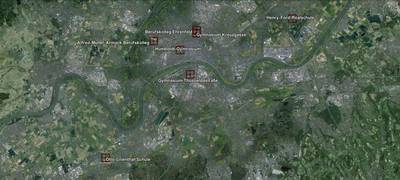Cologne field work
In November/December 2015, field measurements were undertaken at a 7 schools in Cologne, Germany, by GFZ and TU-Berlin.
- To undertake in situ engineering measurements and observations of the main buildings of selected schools in the Cologne area.
- To carry out ambient noise measurements at or near these schools, with the aim of gaining some measure of the expected site amplification via the estimation of the Vs30 parameter.
- To conduct noise measurements in the main school buildings using the same instruments as in the array site assessments.
Figure 1: Map showing the relative locations of the schools inspected in Cologne.
The array measurements employed the GFZ developed 10 MP-WISE (Multi-Parameter WIreless Seismic array instruments connected to 4.5 Hz geophones, and a standard 17 Ah battery. The MP-WISE allows several kinds of sensors to be combined with a computing system able to implement complex information integration and processing tasks at the node or sensor level and therefore suitable for a wide range of possible applications. Measurements were carried out usually for around 1 hour, after which some units were removed and installed within the buildings that were being inspected. The recorded data could also be transmitted via WIFI to a laptop for real-time processing.
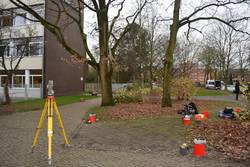
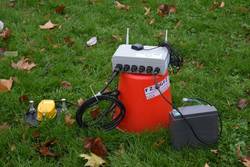
Figure 2: (left) A typical arrangement of a noise measurement array, where the instruments are set up on a paved area in front of a school. (right) The instrumentation employed.
The structural surveys of the school buildings included collecting data about geometrical and physical parameters of the structural elements, which are required for the modelling and seismic vulnerability analysis of the structures. Along with the use of available drawings, we conducted additional geometry measurements in the school buildings. For this, we used conventional measure tapes and a laser distance meter (HILTI PD 5). To investigate details of the structural elements, we used the HILTI PS 50 Multidetector, which is designed to detect objects such as ferrous metals (rebars), non-ferrous metals (copper and aluminium), wood beams, plastic pipes and electric cables in dry materials.
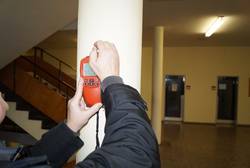
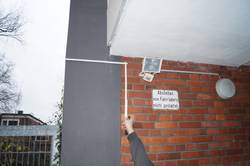
Figure 3: Examples of the engineering measurements made.
Several instruments used in the array measurements after around 1 hour were installed in the school buildings of interest, where further measurements were made for about another 30 to 60 minutes. Typically several sensors were located on the roof (or top floors) of the buildings and one or two sensors on the ground level or in the basement. For the buildings consisting of structural units divided by separation joints, we installed the sensors close to the joint to allow the possibility of investigating and comparing the performance of the separated units.
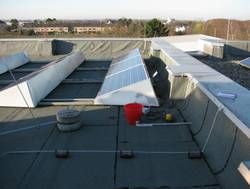
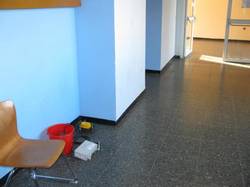
Figure 4: Examples of the setup of the sensors within a building: on the roof (left) or in the top storey (right)
On the last day of the field activities, a representative from the THW (Bundesanstalt Techniches Hilfswerk), Mr. Marius Halbach, inspected the team’s activities on the last day and had the reasoning behind this deployment explained, the instruments used shown and some of the processing tools being developed by the project demonstrated. Mr. Halbach appeared very interested in the work being carried out, in particular the potential value of the instruments used for both rapid site and building assessment. In addition, discussions were had with several of the school principals, where the importance of this work was explained. There was interest shown and, in fact in one case, the principle provided an older map showing the building distribution of Cologne. Furthermore, the students (and teachers) often approached the personal and inquired into what they were doing.
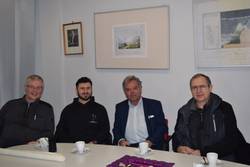
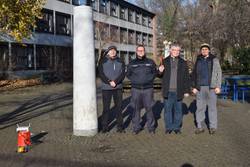
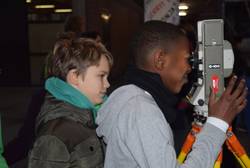
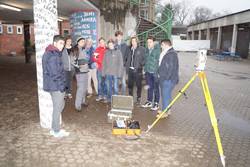
Figure 5: Interactions with school leaders, THW and the general public. (top left) The team and the principle of the Humboldt-Gymnasium, Dr. Harald Junge. (top right) The team with Mr. Marius Halbach of THW. (bottom) Often teachers and students showed interest in the activities of the team.

